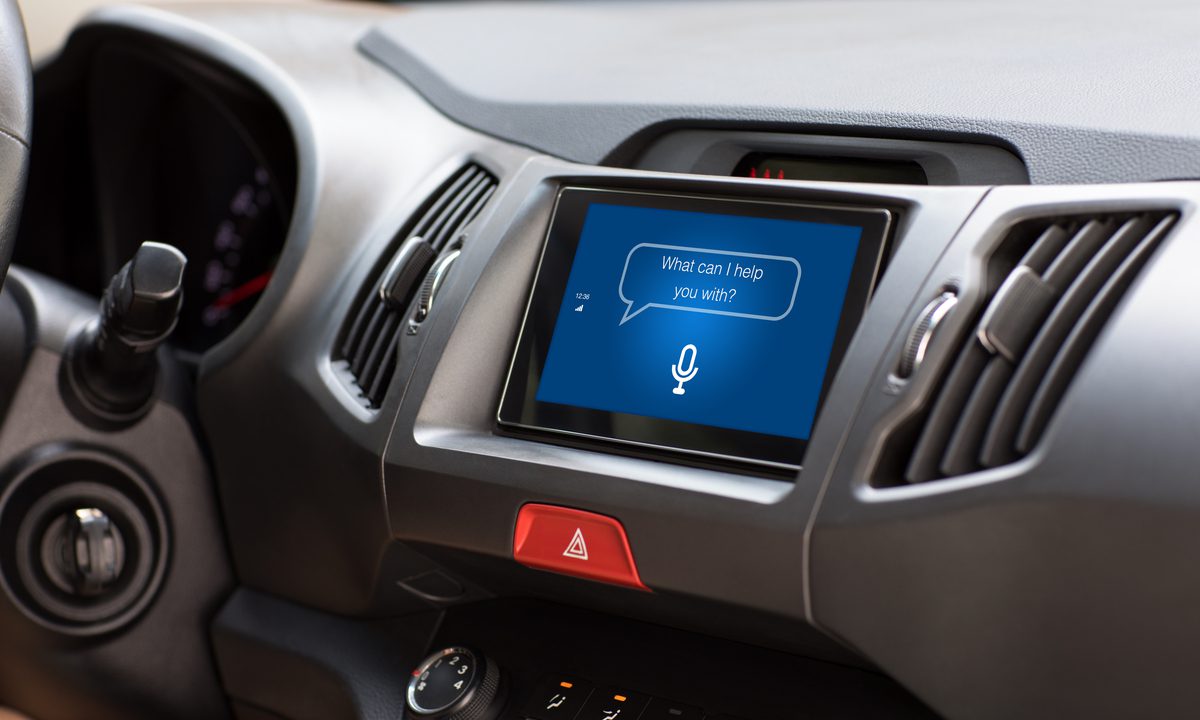AI Brings Your Car Into the Conversation

Just a few years ago, drivers using voice assistants in vehicles would have to know the commands and say them in a robotic way. For example, to ask directions, they’d say, “Navigation, Texas,” and so on.
Today, with the proliferation of voice assistants throughout consumers’ lives, they have come to expect a different experience.
“Everybody’s used to that kind of seamless interaction with technology, so we wanted to bring that into the vehicle, and we wanted to use natural language — you know, you hop in the car and say, ‘Hey, I’m craving some enchiladas,’ just like you’re talking to a friend in the car,” Tori Salido, machine learning engineer at Toyota Connected, told PYMNTS.
Tailoring the Experience to the User
Toyota Connected, an independent data, software and innovation company, developed the new Intelligent Assistant available that is available on the 2022 Toyota Tundra and Lexus NX and will soon be added to more of those brands’ vehicles.
The Intelligent Assistant uses machine learning to be able to understand users’ commands delivered in natural language and is connected to the cloud so that when the user mentions enchiladas, it can recommend nearby restaurants.
“We’re able to take that and learn from that to be able to tailor it to each user and make it an experience for them,” Salido said.
Integrating with Other Components of the Vehicle
By developing the voice assistant in-house, Toyota Connected was also able to allow it to control vehicle functions that other voice assistants would not be able to access.
“The Intelligent Assistant as built today is kind of like a groundwork that we can begin to start integrating other components of the Toyota and Lexus ecosystem into,” Ryan Oehler, product owner, Virtual Assistant, told PYMNTS.
For example, at some point, the assistant may be able to interact with the Cabin Awareness concept recently announced by Toyota Connected, and when that system detects that a vehicle is getting hot while there’s a child in a seat, the assistant could turn on the air conditioning.
Read more: Auto Suppliers Develop Cabin Monitoring Systems to Protect Children, Pets
In addition to learning an individual’s preferences about things like restaurants, the Intelligent Assistant uses machine learning to begin supporting emerging use cases for all drivers when it gets new sorts of requests from some drivers.
“Being a central component of the user experience, [the voice assistant] is a way to differentiate yourself, not only in kind of uniquely serving your customers and what your customers may need, but also it’s kind of a fun way to create more brand moments,” Oehler said.
Solidifying the Consumer’s Relationship with the Brand
For example, Toyota Connected has found that during the first week of using a voice assistant, users often ask general knowledge questions or funny questions to test the limits of the assistant’s capabilities and see how smart it is.
When the assistant is able to handle those questions, and even do so in a fun way, it boosts the user’s confidence in the system and cements their relationship with the automaker.
“When your Toyota or Lexus Intelligent Assistant tells you a joke, or you ask it a funny question, those are moments that really solidify your relationship with the brand,” Oehler said.
Enabling Safe, Fast, Effective Use
With connectivity, the Intelligent Assistant can do such things as deliver streaming media, support navigation and answer questions. There’s also an onboard Voice Assistant that handles such things as controlling the temperature in the vehicle, with or without connectivity.
Voice assistants in general, and natural language ones in particular, help drivers do these things more easily while driving. Oehler said that just under half of the requests made to voice assistants have to do with navigation.
“Driving a vehicle is a very cognitively demanding task, and oftentimes our customers are trying to multitask — like I think everyone does,” Oehler said. “We want to allow our customers to perform the things they need to get to, and we want to allow them to do those things in a way that’s safe, fast and effective.”
As the new Intelligent Assistant is added to more Toyota and Lexus models, the machine learning component will be able to learn even more as it is used by a growing number of drivers.
“We’re building it in-house, and that’s what’s really exciting,” Salido said. “We can focus on our customers, we put them first and we see what they’ve been asking for and we can implement that quickly.”
